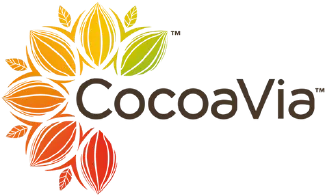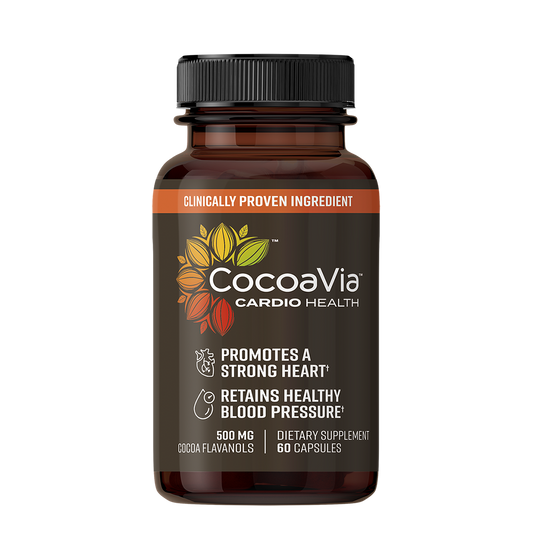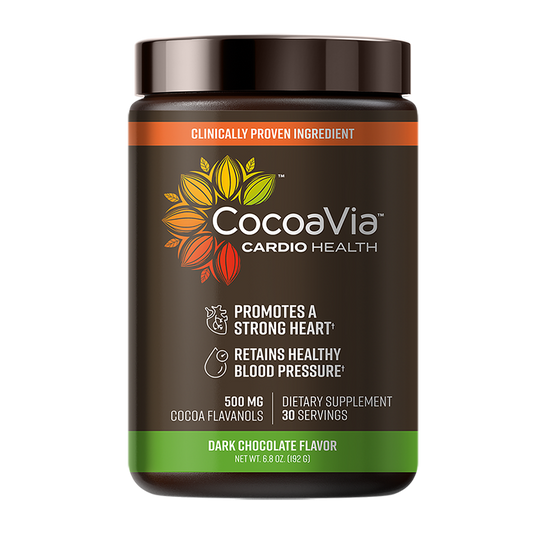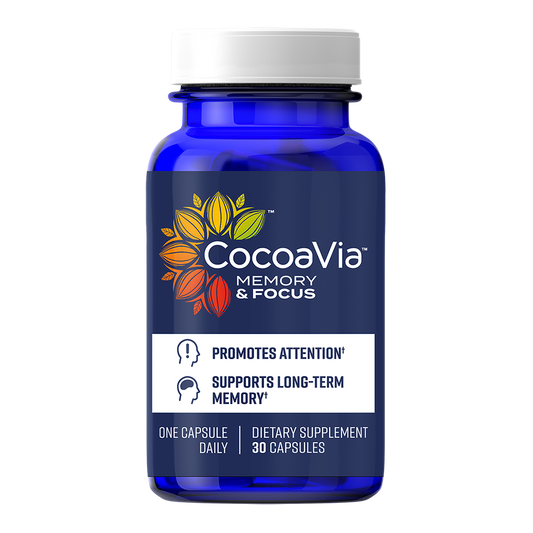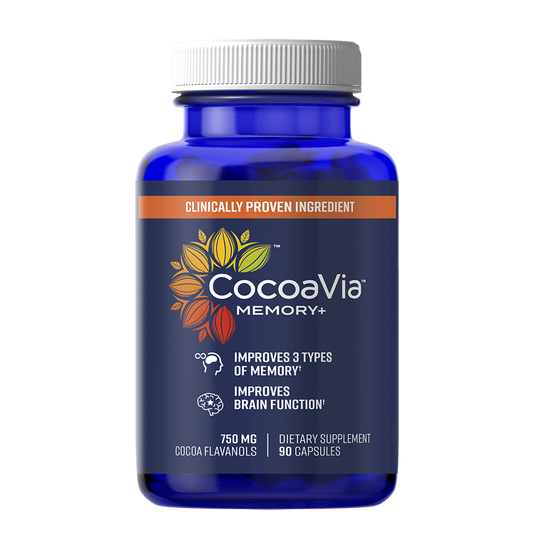
Did You Know..?
- Cocoa contains (-)epicatechin, which research has shown to be a readily and quickly-absorbed form of the compound.
- Cocoa flavanols are part of a family of flavonoids.
- (-)-Epicatechin is a key bioactive component in the mixture of flavanols found in cocoa.
Epicatechin, Flavanols, & the Flavonoid family tree
Have you been hearing about cocoa products touting flavanols and (-)- epicatechin (pronounced as “minus epicatechin”) and wondering what all the buzz is about? Take a deeper dive into those big words, and you’ll find some pretty big proven health benefits. In short, cocoa beans contain a mixture of flavanols that support heart, brain, and total body health. (-)-Epicatechin is one of those flavanols which can be most abundant in certain types of cocoa. Researchers have spent decades studying cocoa flavanols, including (-)-epicatechin, and the positive impact they have on health.
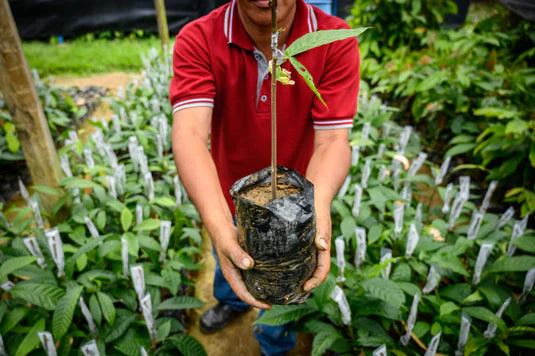
What are Bioactives?
Bioactives are naturally occurring compounds that affect processes within the body. They include specific compounds such as lycopene and lutein, and they can include members of a much larger group of compounds known as polyphenols. Bioactives are not essential to human life like vitamins and minerals, but many of them may play an important role in helping to maintain health and prevent disease.
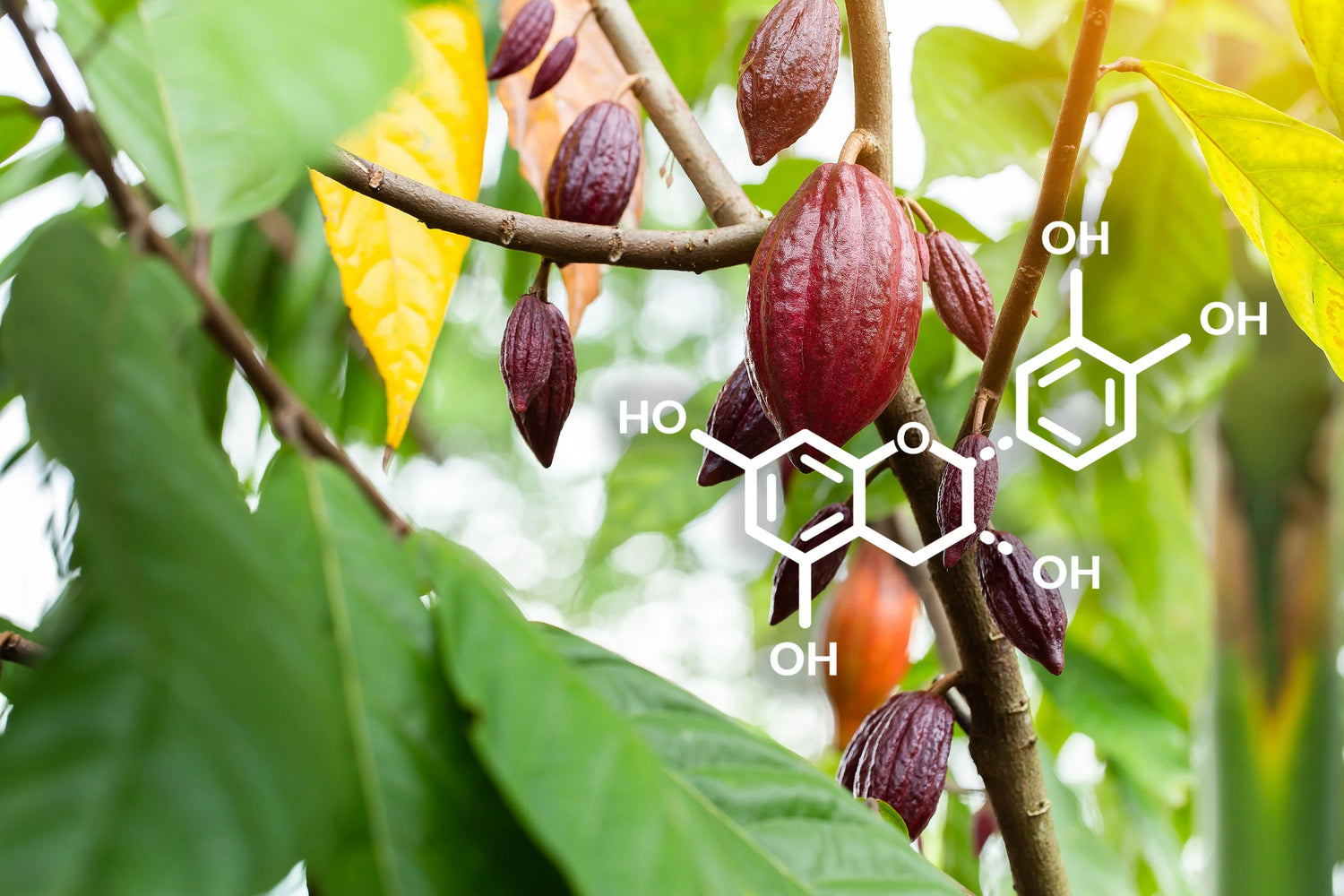
What are Polyphenols?
Polyphenols are a family of bioactive compounds marked by several phenol groups in their chemical structure. There are 6,000-20,000 individual polyphenol compounds in nature, many of which are found in food, including fruits, vegetables and cereals. Numerous studies have looked at whether consuming different polyphenols has a beneficial effect on health.

What are Flavonoids?
Flavonoids are a sub-group of polyphenols that are found in various fruits and vegetables. Flavonoids are divided into subclasses based on their distinct chemical structures. Common subclasses found in the human diet include: flavanols, flavonols, flavones, flavanones, anthocyanins, isoflavones, and proanthocyanidins. Flavonoids are widely present in the diet, for example isoflavones in soy, anthocyanins in berries, flavonols in onions and broccoli, flavones in parsley, and flavanones in citrus fruits. While not essential nutrients, research is showing that dietary flavonoids may offer a range of benefits to human health. There are several subclasses of flavonoids and each class offers distinct health benefits. In the context of cocoa, flavanols are among the most abundant subclass of flavonoids found in this food.
What are Flavanols?
Flavanols are a sub-class of flavonoids. They are predominantly found in tea, apples, pears, cocoa beans and various berries. There are several different flavanols, which differ based on their chemical structure and formula. These include catechin, epicatechin, theaflavins and thearubins. When flavanol monomers form chains, or oligomers, they are known as proanthocyanidins. Proanthocyanidins containing only epicatechin and catechin monomers are called procyanidins.
Remember those cocoa beans? They contain a distinct mixture of flavanols, collectively referred to as “cocoa flavanols.” A significant body of published research shows that consuming cocoa flavanols can help improve your blood flow by increasing the amounts of nitric oxide in your body. Better blood flow can give your brainpower a boost, support healthy blood pressure, and help give you sustained energy throughout the day.
An important bioactive component of the cocoa flavanol mix is the specific flavanol known as (-)-epicatechin.

-
Catechins and Epicatechins
Catechins and epicatechins are types of single flavanol molecules. These molecules are stereoisomers, meaning have the same composition of atoms, but are organized differently in space.
Both catechins and epicatechins come in two different forms: (+)-catechin and (–)-catechin, and (+)-epicatechin and (–)-epicatechin. These plus and minus forms can be thought of as mirror images of one another. This difference in structure between these molecules is subtle, but it accounts for significant differences in how they interact with the human body. -
What is (–)-epicatechin?
(-)-Epicatechin. The word may not roll off the tongue, but its role in helping the body has been clinically proven. (-)-Epicatechin is one specific flavanol component within the mixture of cocoa flavanols. However, (-)-epicatechin is often destroyed or converted to (–)-catechin during cocoa processing. Other foods that contain flavonoids include apples, blueberries, grapes, pears, and teas, but the relative abundance of (-)-epicatechin in each of these foods varies and is impacted by how the food is grown, stored, and even prepared. It’s a specific flavanol form which research has shown to be both readily-absorbed and a key bioactive in the cocoa flavanol mixture.
The beneficial effect of dietary flavanols on health is predominantly caused by the flavanol(-)-epicatechin. While there are relatively small amounts of (+)-epicatechin, (–)-catechin and (+)-catechin found in cocoa flavanols, the main molecule present is (-)-epicatechin. Compared to the plus form, (-)-epicatechin produces different metabolites (secondary molecules resulting from processes in the human body), which contributes to the different biological effects of this molecule.

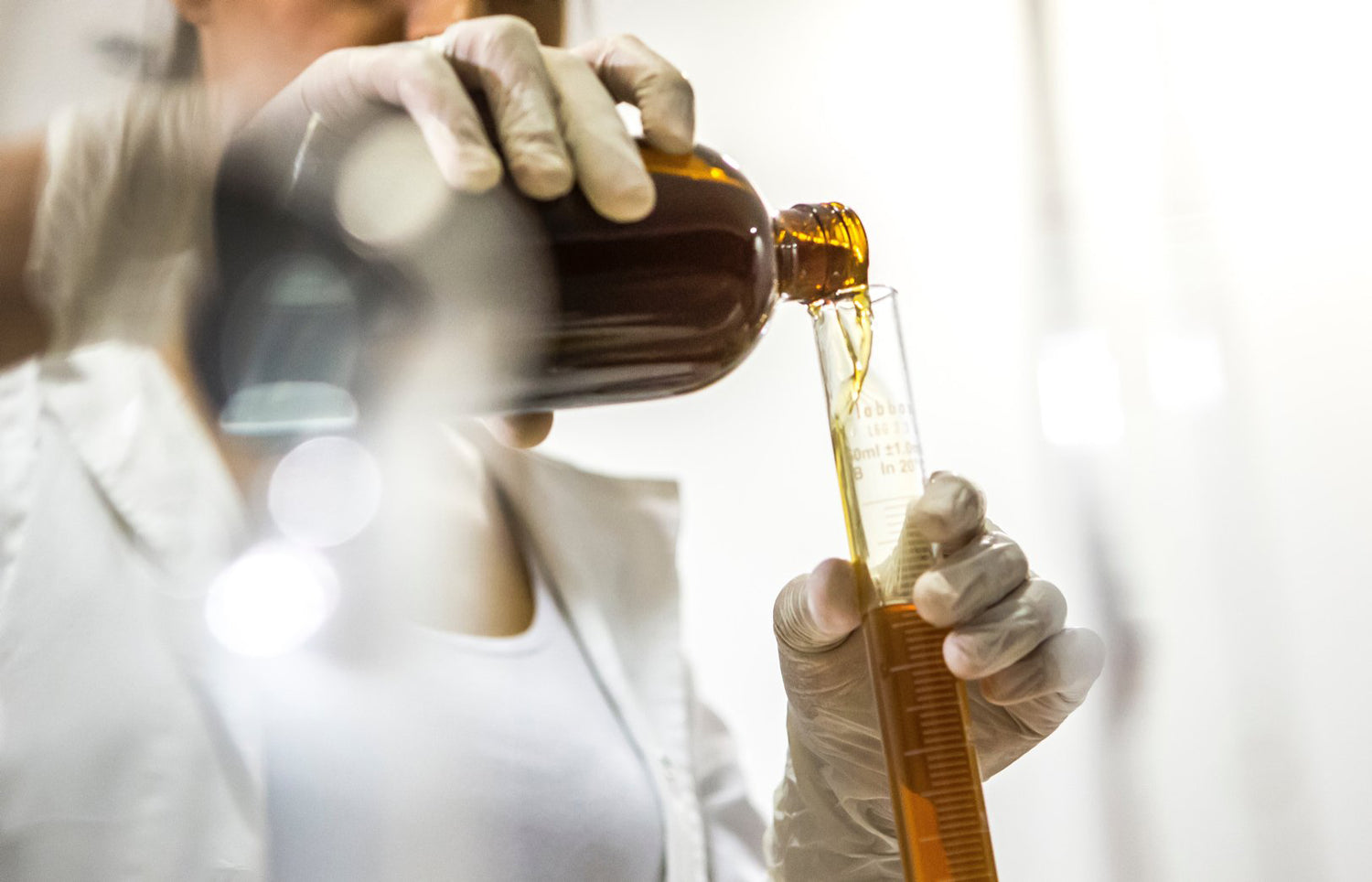
Interested in Learning More about the Science?
When taken daily, the cocoa flavanols in CocoaVia™ have been shown to support a healthy heart and brain function, allowing you to be your best every day. Why not bring home the supplement ConsumerLab.com named as the Highest Quality, Top Rated Cocoa Flavanol Product?
See The Science and read about the clinical studies that show the many ways cocoa flavanols can benefit your whole body!
-
CocoaVia™ Cardio Health Capsules
Support heart health with concentrated capsulesRegular price From $48.99 $1.63 per dayRegular price Sale price From $48.99 $1.63 per dayUnit price / per -
CocoaVia™ Cardio Health Powder
Support heart health with every scoopRegular price From $49.99 $1.66 per dayRegular price Sale price From $49.99 $1.66 per dayUnit price / per -
CocoaVia™ Memory & Focus Capsule
Keeps you focused & boosts memoryRegular price From $49.99 $1.66 per dayRegular price Sale price From $49.99 $1.66 per dayUnit price / per -
CocoaVia™ Memory+ Supplement
Improve your memory in just 8 weeksRegular price From $53.99 $1.79 per dayRegular price Sale price From $53.99 $1.79 per dayUnit price / per
